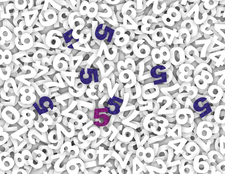New features in digiKam 5
Fifth Generation

© Lead Image © MIR, Fotolia.com
The freshly released digiKam 5 boasts a number of new features, brings many improvements, and ditches some legacy ballast.
If you have more than just a few snapshots in your photo archive, you need powerful software to manage them. The idea is not only to make the images accessible by filename, but in many other ways, as well, such as by time of recording, by keyword, or by geographic location.
For years, digiKam [1] has been considered the most important free software for managing and manipulate large volumes of images. The freshly published digiKam 5 ditches a fair amount of ballast and includes a number of conceptual changes, as well as many smaller additions. Version 5 largely replaces KDE dependencies with dependencies on Qt5 and introduces a number of new features. Version 5.1, the version used for this article, fixed a number of bugs; versions 5.2-5.4 made several improvements to the similarity search engine and include a complete re-write of video file support. Also new in v5.4 is the Maintenance tool (which runs processes in the background to maintain image collections and database contents) in the Tools menu. In this article, I'll take a detailed look at the fifth generation of digiKam.
The Old and the New
DigiKam is based on a simple, clear-cut concept that is reflected in the design. The main window is divided into three panels (Figure 1): the image source (e.g., an album), the images it contains, and the details of the image(s) selected in the current folder or album. This structure has proven its value.
[...]
Buy this article as PDF
(incl. VAT)
Buy Linux Magazine
Subscribe to our Linux Newsletters
Find Linux and Open Source Jobs
Subscribe to our ADMIN Newsletters
Support Our Work
Linux Magazine content is made possible with support from readers like you. Please consider contributing when you’ve found an article to be beneficial.

News
-
Zorin OS 18 Hits over a Million Downloads
If you doubt Linux isn't gaining popularity, you only have to look at Zorin OS's download numbers.
-
TUXEDO Computers Scraps Snapdragon X1E-Based Laptop
Due to issues with a Snapdragon CPU, TUXEDO Computers has cancelled its plans to release a laptop based on this elite hardware.
-
Debian Unleashes Debian Libre Live
Debian Libre Live keeps your machine free of proprietary software.
-
Valve Announces Pending Release of Steam Machine
Shout it to the heavens: Steam Machine, powered by Linux, is set to arrive in 2026.
-
Happy Birthday, ADMIN Magazine!
ADMIN is celebrating its 15th anniversary with issue #90.
-
Another Linux Malware Discovered
Russian hackers use Hyper-V to hide malware within Linux virtual machines.
-
TUXEDO Computers Announces a New InfinityBook
TUXEDO Computers is at it again with a new InfinityBook that will meet your professional and gaming needs.
-
SUSE Dives into the Agentic AI Pool
SUSE becomes the first open source company to adopt agentic AI with SUSE Enterprise Linux 16.
-
Linux Now Runs Most Windows Games
The latest data shows that nearly 90 percent of Windows games can be played on Linux.
-
Fedora 43 Has Finally Landed
The Fedora Linux developers have announced their latest release, Fedora 43.

